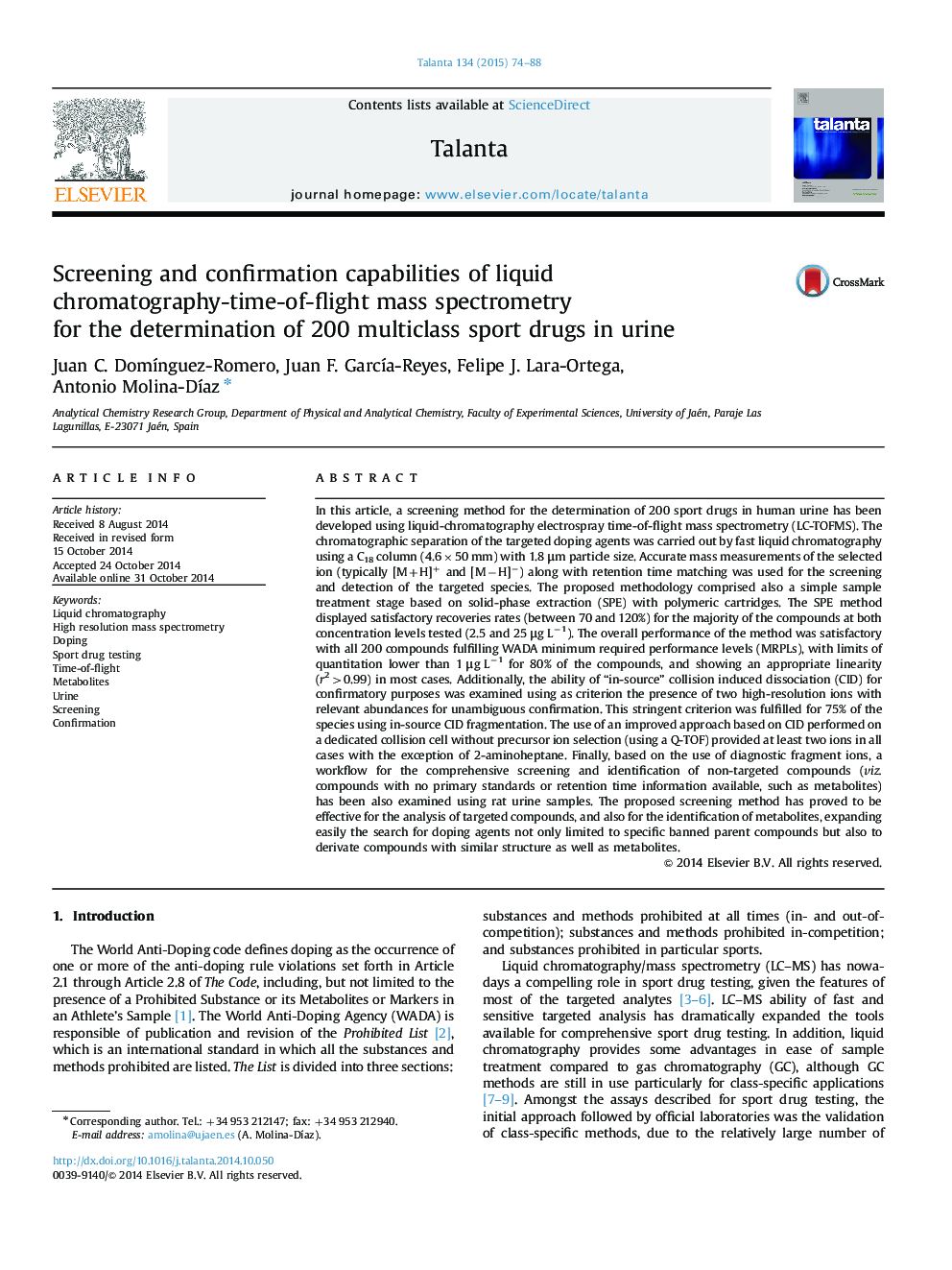| کد مقاله | کد نشریه | سال انتشار | مقاله انگلیسی | نسخه تمام متن |
|---|---|---|---|---|
| 1244054 | 1495801 | 2015 | 15 صفحه PDF | دانلود رایگان |
• 200 Multiclass sport drugs belonging to different categories tested using LC-TOFMS.
• All 200 compounds fulfilled WADA minimum required performance levels.
• In-source CID and CID MS/MS fragmentation without precursor isolation examined.
• Accurate mass shifts and diagnostic fragment ions used for untargeted detection.
In this article, a screening method for the determination of 200 sport drugs in human urine has been developed using liquid-chromatography electrospray time-of-flight mass spectrometry (LC-TOFMS). The chromatographic separation of the targeted doping agents was carried out by fast liquid chromatography using a C18 column (4.6×50 mm) with 1.8 μm particle size. Accurate mass measurements of the selected ion (typically [M+H]+ and [M−H]−) along with retention time matching was used for the screening and detection of the targeted species. The proposed methodology comprised also a simple sample treatment stage based on solid-phase extraction (SPE) with polymeric cartridges. The SPE method displayed satisfactory recoveries rates (between 70 and 120%) for the majority of the compounds at both concentration levels tested (2.5 and 25 μg L−1). The overall performance of the method was satisfactory with all 200 compounds fulfilling WADA minimum required performance levels (MRPLs), with limits of quantitation lower than 1 μg L−1 for 80% of the compounds, and showing an appropriate linearity (r2>0.99) in most cases. Additionally, the ability of “in-source” collision induced dissociation (CID) for confirmatory purposes was examined using as criterion the presence of two high-resolution ions with relevant abundances for unambiguous confirmation. This stringent criterion was fulfilled for 75% of the species using in-source CID fragmentation. The use of an improved approach based on CID performed on a dedicated collision cell without precursor ion selection (using a Q-TOF) provided at least two ions in all cases with the exception of 2-aminoheptane. Finally, based on the use of diagnostic fragment ions, a workflow for the comprehensive screening and identification of non-targeted compounds (viz. compounds with no primary standards or retention time information available, such as metabolites) has been also examined using rat urine samples. The proposed screening method has proved to be effective for the analysis of targeted compounds, and also for the identification of metabolites, expanding easily the search for doping agents not only limited to specific banned parent compounds but also to derivate compounds with similar structure as well as metabolites.
Figure optionsDownload as PowerPoint slide
Journal: Talanta - Volume 134, 1 March 2015, Pages 74–88
